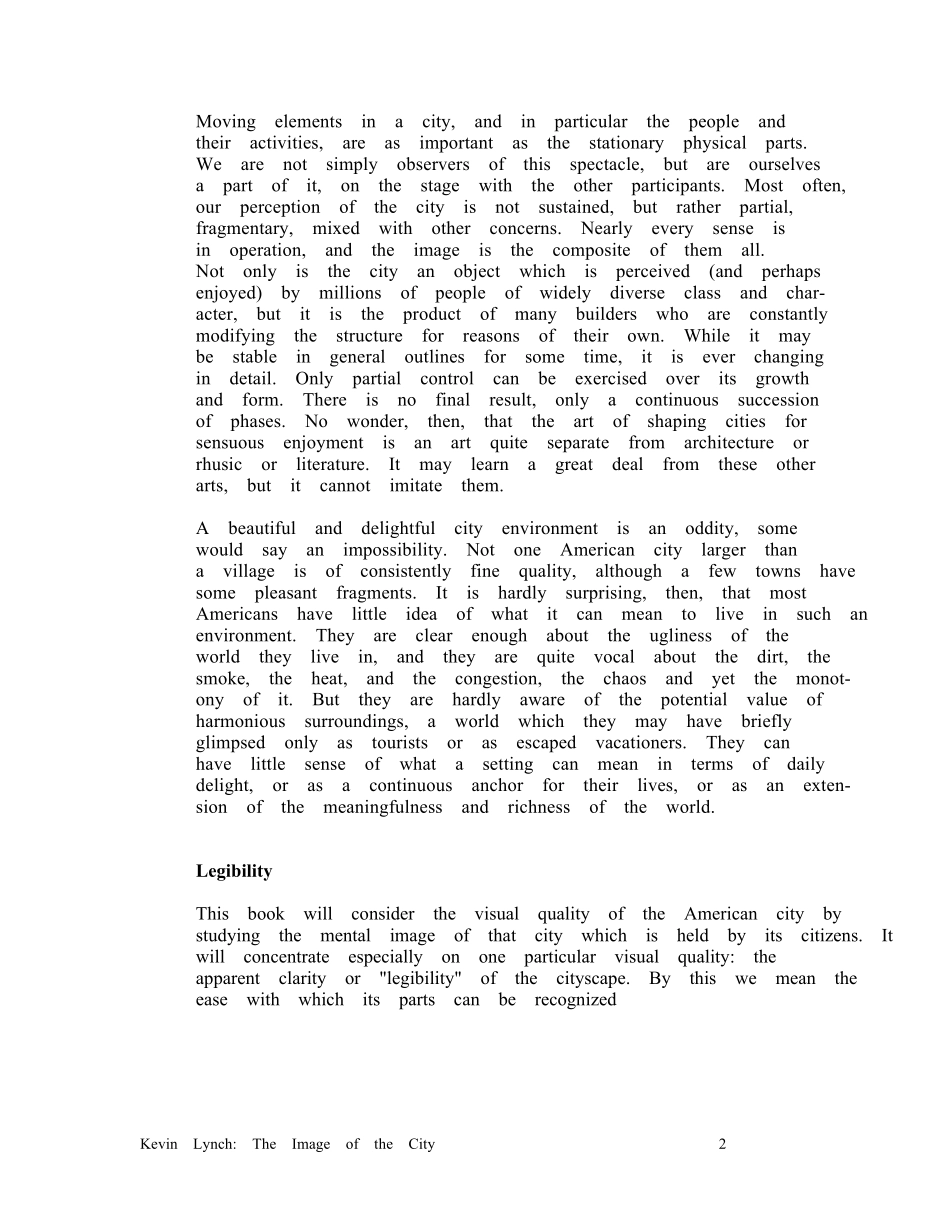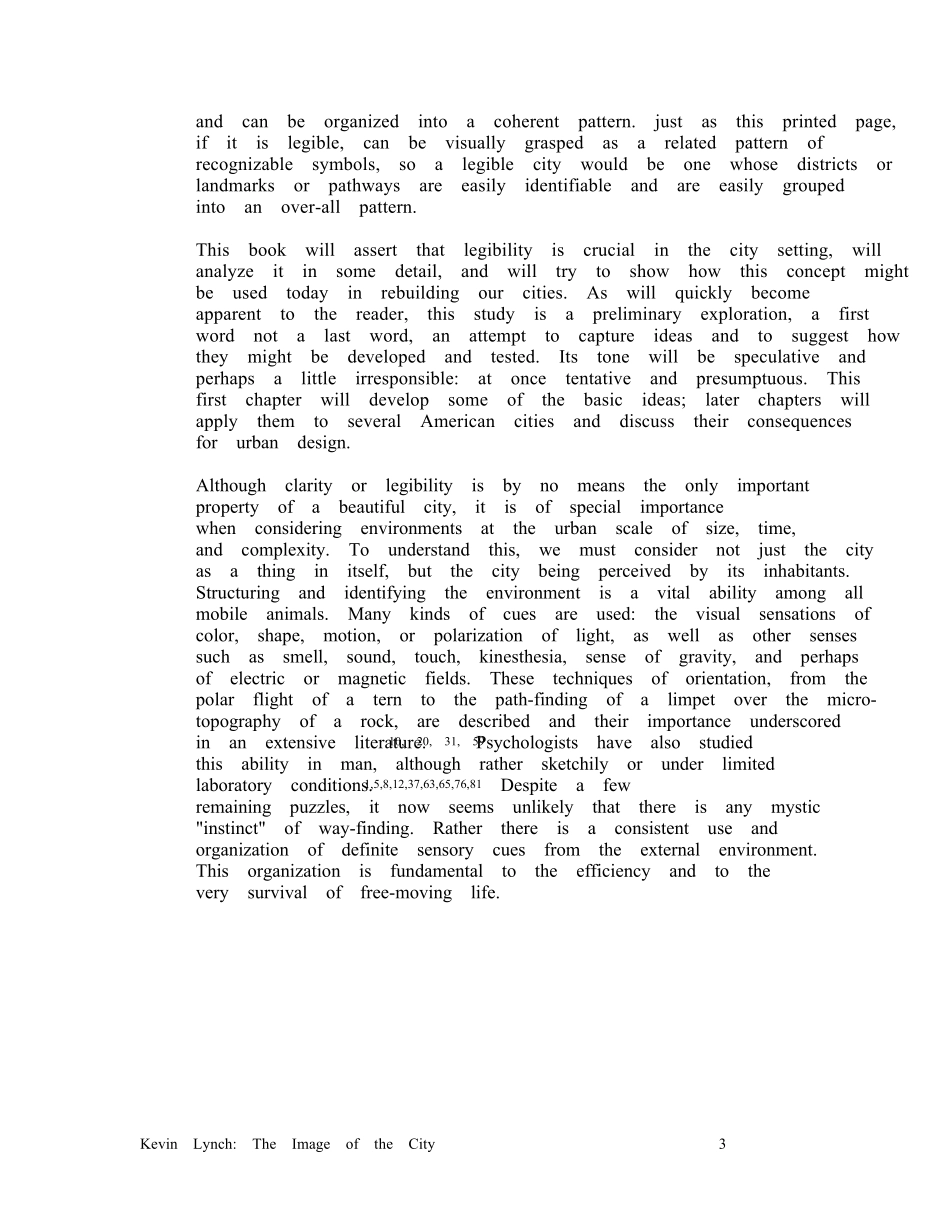Kevin Lynch: The Image of the City 1 Kevin Lynch: The Image of the City. Cambridge Massachussettes, 1960 MIT Press 1. THE IMAGE OF THE ENVIRONMENT Looking at cities can give a special pleasure, however commonplace the sight may be. Like a piece of architecture, the city is a construction in space, but one of vast scale, a thing perceived only in the course of long spans of time. City design is therefore a temporal art, but it can rarely use the controlled and limited sequences of other temporal arts like music. On different occasions and for different people, the sequences are reversed, interrupted, abandoned, cut across. It is seen in all lights and all weathers. At every instant, there is more than the eye can see, more than the ear can hear, a setting or a view waiting to be explored. Nothing is experienced by itself, but always in relation to its surroundings, the sequences of events leading up to it, the memory of past experiences. Washington Street set in a farmer's field might look like the shopping street in the heart of Boston, and yet it would seem utterly different. Every citizen has had long associations with some part of his city, and his image is soaked in memories and meanings. Kevin Lynch: The Image of the City 2 Moving elements in a city, and in particular the people and their activities, are as important as the stationary physical parts. We are not simply observers of this spectacle, but are ourselves a part of it, on the stage with the other participants. Most often, our perception of the city is not sustained, but rather partial, fragmentary, mixed with other concerns. Nearly every sense is in operation, and the image is the composite of them all. Not...


